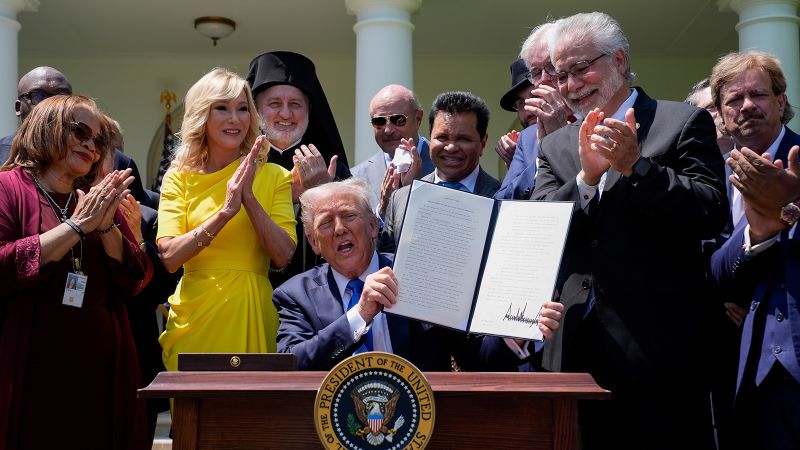On a significant Thursday, President Donald Trump enacted an executive order that aimed to eliminate federal funding for two of America’s largest public broadcasting institutions, specifically the Corporation for Public Broadcasting (CPB), National Public Radio (NPR), and the Public Broadcasting Service (PBS). This decision unfolded amidst ongoing discourse regarding alleged bias in reporting from these news outlets, which had been a recurring theme in the rhetoric coming from the White House as well as certain Republican lawmakers. The perceived partiality in news coverage had created a charged atmosphere, whereby these institutions continually found themselves under scrutiny.
The executive order explicitly directed the board of the CPB to halt direct funding to NPR and PBS to the greatest extent permissible by law. Additionally, the order called upon the board to actively seek to “minimize or eliminate” any future indirect funding these broadcasters may receive. The document served as a substantial maneuver by the Trump administration to curb support for what they deem potentially untrustworthy sources of news. The implications of this order raised concerns among those who appreciate the crucial role public broadcasting plays in providing diverse content to American listeners and viewers.
Furthermore, the directive encompassed a broader scope; it instructed Health and Human Services Secretary Robert F. Kennedy Jr. to initiate an investigation into claims of employment discrimination against NPR and PBS. Moreover, heads of all federal agencies were commanded to assess their respective funding streams in relation to these media organizations, identifying any potential financial connections that should be severed in accordance with the order.
This ambitious executive order came on the heels of prior criticisms leveled at NPR and PBS from the Trump administration and notable Republican officials, reflecting an ongoing battle between the government and these broadcasting organizations. Tensions escalated recently when the CPB filed a lawsuit against the Trump administration following the abrupt termination of three of its five board members via email. The dismissed members – Laura G. Ross, Thomas E. Rothman, and Diane Kaplan – had been appointed to their positions during the Biden administration, with Ross having originally been called to service by Trump in his initial tenure.
Compellingly, the CPB is responsible for distributing a substantial $535 million in taxpayer funds yearly to various public radio and television stations across the nation. This portfolio includes not just NPR and PBS, but also lesser-known media outlets that contribute to the diverse tapestry of public broadcasting. The undertaking of such funding generates significant discussions surrounding the future of educational and public media in the United States.
Adding more pressure to the situation, the White House has indicated intentions to request Congress to retract allocated funds for the CPB over the subsequent two years. This not only underscores the administration’s commitment to implementing the executive order but also amplifies anxieties among public broadcasters about their survival and operational capabilities in an ever-changing political landscape.
Notably, the CPB was established by Congress in 1967 with the intent to function as a private entity, thereby shielding it from direct government interference and control. This legislative effort was meant to provide a barrier against what lawmakers viewed as potential threats to the editorial independence crucial to educational television and radio broadcasting. The incorporation of such protections is particularly relevant in the contemporary political climate, where debates regarding media bias and influence have become intensely polarized.
In summary, President Trump’s executive order represents a pivotal moment in the ongoing dialogue surrounding public broadcasting, media autonomy, and government funding. This multifaceted situation showcases the intersection of political objectives, the role of government in media, and the fundamental principles laid out in legislation designed to protect public media’s integrity. It remains to be seen how this conflict will evolve, particularly in relation to the response from Congress, the CPB, and the public at large.



